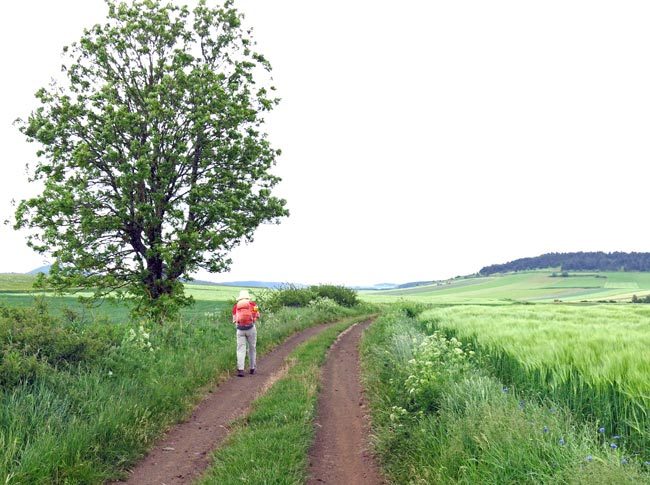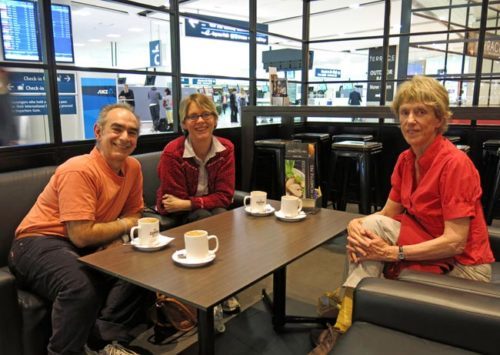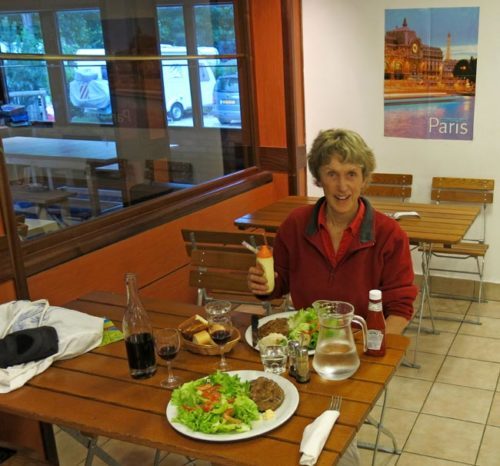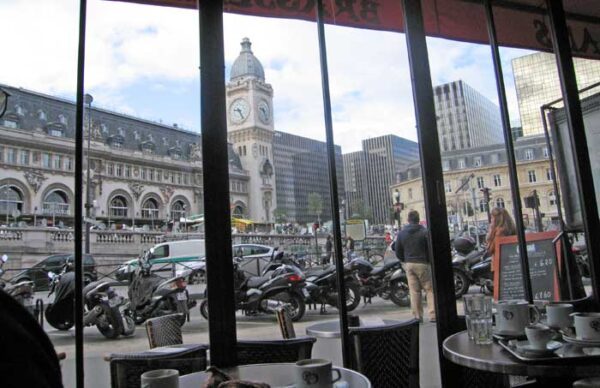
This first section is the beginning of the Regordane (the GR70) and also of the Robert Louis Stevenson walk (the GR700) which we had done in 2004. However, in 2004 we had not stuck closely to Robert Louis’ itinerary, cutting off a few corners, and we discovered that the newly developed Régordane walk took much the same short cut that we had.
Therefore we decided, for the sake of variety, to make our own way from Costaros to Pradelles, using paths and minor roads. This turned out very well.
From Pradelles to la Bastide-Puylaurent the two GRs were the same, so there was some repetition with our 2004 walk, although not as much as we expected – the route had changed a bit.
These first three days were undertaken in shockingly cold weather, even though it was the middle of summer. Probably this is not uncommon in the Cévennes.
Getting to le Puy-en-Velay

At 8 o’clock in the morning on midwinter’s day, dressed in our light summer walking clothes, we stepped out of our Canberra front door and caught the local bus into town. then a bigger bus to Sydney airport.
Thirty-three sleepless hours later, we marched into the camping ground of Paris. (It was actually worse than this – the time from leaving home to arriving at the Paris camping ground was a punishing forty-five hours.)

After an excellent evening meal in the camping ground and a good sleep, we took the Métro to the Gare de Lyon, had breakfast at a cafe nearby and caught the 10 am train to le Puy, arriving at about 2:30 pm.
As we had been to le Puy several times before, we had no trouble finding the start of the Régordane amongst all the GRs that leave from this town (the Way of Le Puy, the Robert Louis Stevenson walk and the Gorges of the Loire walk among others).

There were red-and-white GR markers everywhere, so it was important to find the right ones.
From the station we made our way to the central Place du Breuil and stopped for coffee at a lively terrace bar on the corner of the Rue Vibert.
It was the first of what we hoped would be many such delights over the next five weeks.
Day 1: Le Puy-en-Velay to Bizac
Day 2: Bizac to Langogne